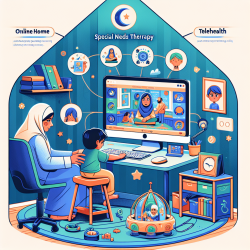Welcome to the World of Virtual Therapy!
As a Special Education Director, I've witnessed the transformative power of virtual therapy in our schools. It's an exciting time for special education advocacy groups to explore this new frontier and see how it can make a difference for students in need.
Why Virtual Therapy?
Virtual therapy offers numerous benefits that make it an attractive option for schools and special education programs:
- Accessibility: Students in remote or underserved areas can access therapy services without the need for travel.
- Flexibility: Sessions can be scheduled at convenient times, reducing the need for students to miss important class time.
- Customization: Therapy programs can be tailored to the specific needs of each student, ensuring they receive the best possible care.
- Cost-Effective: Virtual therapy often requires fewer resources, making it a budget-friendly option for school districts.
Legal Compliance and Staffing Solutions
As leaders in special education, it's crucial to ensure that virtual therapy services comply with all legal requirements. This includes privacy laws and guidelines specific to special education. Working with reputable online therapy providers like TinyEYE can help ensure compliance and quality service delivery.
Additionally, virtual therapy can alleviate therapist staffing shortages. With the ability to connect with therapists from different locations, schools can fill gaps in their staffing more efficiently, ensuring that every student receives the support they need.
Engaging Parents and Caregivers
Involving parents and caregivers in the therapy process is essential for success. Virtual therapy platforms often include features that allow parents to participate in sessions or receive updates on their child's progress. This transparency fosters a collaborative environment where everyone works together to support the student's development.
Taking the Next Step
For special education advocacy groups, now is the time to champion virtual therapy as a viable and effective solution for schools. By advocating for the adoption of these services, you can help ensure that all students have access to the support they need to thrive.
If you're interested in learning more about how virtual therapy can benefit your school district, consider attending webinars, joining conferences, or connecting with providers like TinyEYE to explore the possibilities.
Conclusion
Virtual therapy is not just a trend; it's a revolutionary approach to special education that holds the potential to transform the way we support students. By embracing this technology, we can create a more inclusive and effective educational environment for all learners.










